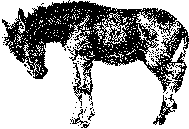War photography captures images of armed conflict and life in war-torn areas, beginning with Roger Fenton's photographs of the Crimean War of 1853-56, in which he was limited by his bulky equipment and the technology of the day, which had not yet developed a method for photographing moving objects.
The photography of war depicts the terrors of war mingled with acts of sacrifice. Different to paintings or drawings of war, photographic images are not easily altered; although in some cases, photographers manipulate the subjects and scenes depicted in a work, resulting in an image that is not completely objective in nature.
Photography, presented to the public in 1839, was believed to create images that were accurate representations of the world. In 1859, it was predicted that photography would be able to visually document future wars correctly by generating precise documentation of battles, fortifications, landscapes, soldiers, and military officers. Photography’s accuracy was assumed and taken as a mechanical impression of reality. As explained by Louis Daguerre, the creator of the first commercial photographic process, images produced by the camera were of “absolute truth” and “infinitely more accurate than any painting by the human hand.”
Photography was used to record historical information, but not always in the optimistic way that was conceived at the advent of the medium.
It was anticipated that photographers, supposedly not acting as active participants of war but as neutral partisan, would be able to bring their cumbersome photographic equipment into the battlefield and record the rapid action of combat. This was not the case, as the technical insufficiency of the photograph in recording movement was not considered. The daguerreotype, an early form of photography that generated a single image using a silver-coated copper plate, took a very long time to produce. This prevented action photography, as images took minutes to develop and could not be processed immediately.
The first war photographer was Roger Fenton in the Crimean War of 1853-56, although with his bulky equipment he was limited to posed still photographs or landscapes. He took a large van and an assistant, and returned to Britain with over 350 usable large format negatives.
The inability of the early photograph to record a moving object lead to the practice of recreating scenes of battle, such as in the work of both Haley Sims and Alexander Gardner. They admittedly reconfigured scenes that took place during the American Civil War (1861-1865) in order to intensify the visual and emotional effects of battle. Alexander Gardner and Matthew Brady rearranged bodies of dead soldiers during the Civil War in order to create a clear picture of the atrocities associated with battle. In Soldiers on the Battlefield, 1862, Brady produced a controversial tableau of the dead within a desolate landscape. This work, along with Alexander Gardner’s 1863 work Home of a Rebel Sharpshooter were images, which, when shown to the public, brought home the horrific reality of war.
Since early photographers were not able to create images of moving targets, they would record more sedentary aspects of war, such as fortifications, soldiers, and land before and after battle along with the re-creation of action scenes. Similar to battle photography, portrait images of soldiers were also often staged. In order to produce a photograph, the subject had to be perfectly still for a matter of minutes, so they were posed to be comfortable and minimize movement.
Unlike paintings, which presented a single illustration of a specific event, photography offered the opportunity for an extensive amount of images to enter circulation. The proliferation of the photographic images allowed the public to be well informed in the discourses of war. The advent of mass-reproduced images of war were not only used to inform the public but they served as imprints of the time and as historical recordings. Mass-produced images did have consequences. Besides informing the public, the glut of images in distribution over-saturated the market, allowing viewers to develop the ability to disregard the immediate value and historical importance of certain photographs.
Photographers who participate in this genre may find themselves placed in harm's way, and are sometimes killed trying to get their pictures out of the war arena. Journalists and photographers are protected by international conventions of armed warfare, but history shows that they are often considered targets by warring groups — sometimes to show hatred of their opponents and other times to prevent the facts shown in the photographs from being known. War photography has become more dangerous with the terrorist style of armed conflict as some terrorists target journalists and photographers. In the current Iraq War, several photographers have been captured and executed by terrorists or shot by armed insurgents.
Saturday, September 5, 2009
Subscribe to:
Post Comments (Atom)
Blog Archive
-
▼
2009
(263)
-
▼
September
(19)
- Will Spirituality Ever Be Serious?
- Sherman!
- The Scourge Persists
- Matthew 25:31-46
- Gaddafi Not Invited to Obama UN Reception
- This about Sums it Up eh?
- Here is a truly delightful YouTube Channel!
- Happy Labor Day 2009
- Back in the saddle after 63 years … Riding returns...
- What does the Bible say about poverty and health c...
- Every Women should watch this!
- War photography
- AP IMPACT: Calm — then sudden death in Afghan war
- Julie Jacobson photographer
- "He punched me hard, straight in the face, so I bi...
- The Speckled Sussex
- Happy Chickens
- Chicks Being Ground Up Alive Video
- Swine Flu
-
▼
September
(19)
About Me

- Gimmer
- I grew up in Chautauqua County, NY. I graduated from Edinboro University of Pennyslvania in 1981 with a BFA in Jewelry and Metalworking. I have been married 31 years. I currently run a small business with my husband. We both enjoy the outdoors and animals a great deal and live on a tiny farm in Western, NY.






No comments:
Post a Comment